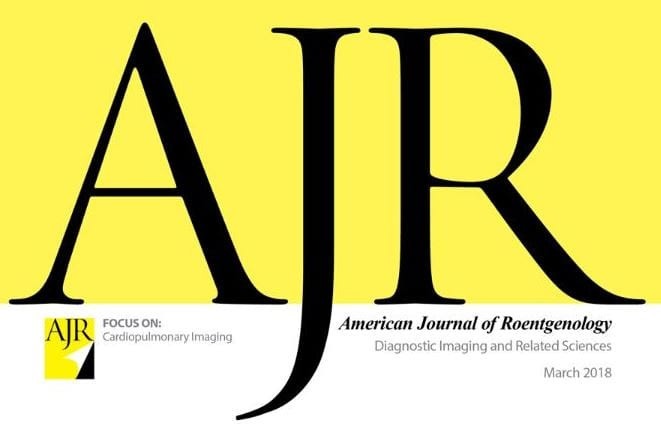Original Research
ANATOMY OF THE URETHRAL SUPPORTING LIGAMENTS DEFINED BY DISSECTION, HISTOLOGY, AND MRI OF FEMALE CADAVERS AND MRI OF HEALTHY NULLIPAROUS WOMEN
22 JULY, 2007
OBJECTIVE. There has been no uniformity of opinion concerning the structures supporting the female urethra. Therefore, the aims of this prospective study were to define precisely the female urethral support structures at cadaveric anatomic dissection and histologic examination and to determine which of these structures can be detected on MRI of cadaveric specimens and of healthy volunteers.
PREOPERATIVE AND POSTOPERATIVE MAGNETIC RESONANCE IMAGING OF FEMALE PELVIC FLOOR DYSFUNCTION: CORRELATION WITH CLINICAL FINDINGS
4 DECEMBER, 2005
Objective: To determine the role of magnetic resonance imaging (MRI) in surgical planning for females with pelvic floor dysfunction.
PELVIC FLOOR DYSFUNCTION: ASSESSMENT WITH COMBINED ANALYSIS OF STATIC AND DYNAMIC MR IMAGING FINDINGS
4 AUGUST, 2008
To prospectively analyze static and dynamic magnetic resonance (MR) images simultaneously to determine whether stress urinary incontinence (SUI), pelvic organ prolapse (POP), and anal incontinence are associated with specific pelvic floor abnormalities.
RECENT ADVANCES IN MRI IN THE PREOPERATIVE ASSESSMENT OF ANORECTAL MALFORMATIONS
6 APRIL, 2016
Objective: To prospectively evaluate the diagnostic accuracy of triplanar 2D magnetic resonance (MR) images versus the post processing reconstructed MR images generated from a single 3D VISTA sequence in children with anorectal malformations compared with the operative findings as the Golden standard.
MAGNETIC RESONANCE IMAGING OF PELVIC FLOOR DYSFUNCTION – JOINT RECOMMENDATIONS OF THE ESUR AND ESGAR PELVIC FLOOR WORKING GROUP
11 MAY, 2016
Objective To develop recommendations that can be used as guidance for standardized approach regarding indications, patient preparation, sequences acquisition, interpretation and reporting of magnetic resonance imaging (MRI) for diagnosis and grading of pelvic floor dysfunction (PFD).
VARIABILITY IN UTILIZATION AND TECHNIQUES OF PELVIC FLOOR IMAGING: FINDINGS OF THE SAR PELVIC FLOOR DYSFUNCTION DISEASE‑FOCUSED PANEL
15 JANUARY, 2021
Pelvic floor disorders are common and can negatively impact quality of life. Imaging of patients with pelvic floor disorders has been extremely heterogeneous between institutions due in part to variations in clinical expectations, technical considerations, and radiologist experience.
CONSENSUS DEFINITIONS AND INTERPRETATION TEMPLATES FOR FLUOROSCOPIC IMAGING OF DEFECATORY PELVIC FLOOR DISORDERS
1 JUNE, 2021
Proceedings of the Consensus Meeting of the Pelvic Floor Consortium of the American Society of Colon and Rectal Surgeons, the Society of Abdominal Radiology, the International Continence Society, the American Urogynecologic Society, the International Urogynecological Association, and the Society of Gynecologic Surgeons
MR DEFECOGRAPHY TECHNIQUE: RECOMMENDATIONS OF THE SOCIETY OF ABDOMINAL RADIOLOGY’S DISEASE‑FOCUSED PANEL ON PELVIC FLOOR IMAGING
5 AUGUST, 2019
Purpose To develop recommendations for magnetic resonance (MR) defecography technique based on consensus of expert radiologists on the disease-focused panel of the Society of Abdominal Radiology (SAR). Methods An extensive questionnaire was sent to a group of 20 experts from the disease-focused panel of the SAR. The questionnaire encompassed details of technique and MRI protocol used for evaluating pelvic floor disorders. 75% agreement on questionnaire responses was defined as consensus.
SOLITARY RECTAL ULCER SYNDROME (SRUS): OBSERVATIONAL CASE SERIES FINDINGS ON MR DEFECOGRAPHY
17 MAY, 2021
Objective Radiological findings in solitary rectal ulcer syndrome (SRUS) are well described for evacuation proctography (EP) but sparse for magnetic resonance defecography (MRD). In order to rectify this, we describe the spectrum of MRD findings in patients with histologically proven SRUS.









